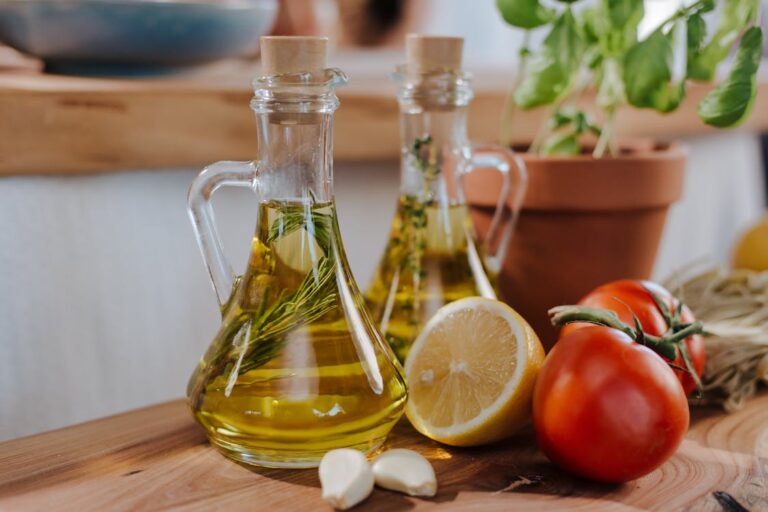With an ever-expanding range of different oils on offer, it can be a challenge to know what to use, or how to use them, especially for beginner cooks. Some also offer added nutritional benefits, while others (such as saturated and trans fats) do not.
Understanding smoke points, variations in flavor and other factors might seem like a lot of information to take on, but if you want to take your cooking to the next level, it’s all worth knowing, which is why we’ve put together this guide to using oils in cooking.
Types of Cooking Oils and Their Uses
Avocado
Where olive oil is unavailable, an avocado oil substitute works just as well, and in terms of smoke point, it’s arguably a better (if slightly more expensive) option: unrefined avocado oil heats to 400°F, while refined heats to 520°F, making it suitable for roasting.
Olive
While EVOO contains antioxidants, polyphenols and vitamin E, it has a lower smoke point, making it better suited for drizzling, dressing and foods cooked over a low heat. Refined olive oil remains stable at slightly higher temperatures and can be used for things like searing.
Canola
Low in saturated fats and high in omega-3s, refined canola oil can be heated to around 475°F, making it useful for grilling or sautéing. While canola has a delicate taste, use it within six months to one year after opening, as it can develop a slightly fishy taste.
Vegetable
Other varieties in the vegetable oil category include soybean, cottonseed, safflower, sunflower and corn, all of which have a relatively high smoke point, making them good for roasting, frying or baking.

While these are healthier than solid fats, they lack the benefits of monounsaturated options like olive and avocado oil.
Peanut
The high heat tolerance of peanut oil makes it a popular choice for stir frys, adding a subtle nutty flavor to dishes. It also contains vitamin E, antioxidants and monounsaturated fats, which can be beneficial for heart health, but if you are a nut allergy sufferer, this is one to miss.
Coconut
In recent years, coconut oil has risen in popularity in the beauty world for its moisturizing effects on hair and skin. While there are numerous claims about its health benefits, coconut oil is still a saturated fat, making it better for your bathroom (rather than the kitchen) counter.
Smoke Point
When frying, make sure to choose an oil with a smoke point that matches the temperature you need for cooking: too low, and it can cause the oil to break down and burn. Not only does this affect taste, but it also risks oxidation.
Oxidation occurs when free fatty acids break down, releasing harmful compounds and free radicals and affecting nutrition. Importantly, oil cooked past its smoke point can lead to fires, so when cooking with oils, take extra care to choose the most appropriate oil for your cooking temperature.
Types of Fat
At one time, fats were generally considered negative, but this tended to refer to saturated fats, which are known to increase unhealthy cholesterol, contributing to things like stroke, heart disease, and diabetes.

Palm oil (another saturated fat) contributes to deforestation and species endangerment. While it appears in many products, it’s best to avoid this when cooking, especially with so many environmentally and heart-friendly options available.

